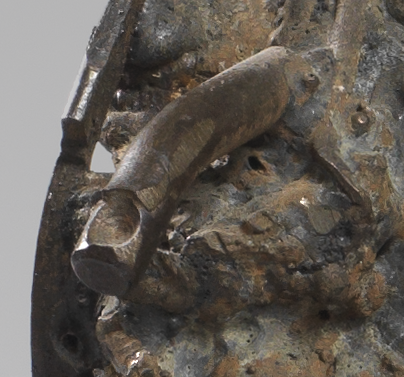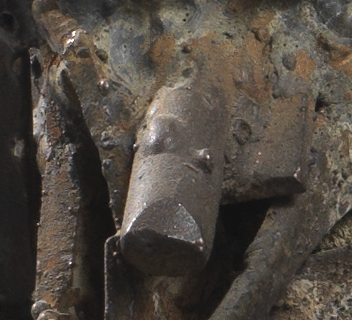Control Shaft and Metalwork Punch
There are two interesting items in this section of the sculpture: a control shaft and a metalwork punch.
The top-most object is a section of rolled steel bar, with bevelled end and circular indentation. Rolled steel refers to solid tubes or bars of steel, with a circular cross-section. The name comes from the rolling machines used in the materials construction. It is very strong and has lots of applications, particularly in construction. The most likely use of this section of steel bar was as the shaft of a control valve on an industrial machine. A wheel could have been fitted over the end of the bar, and a screw could then be tightened into the circular indentation – fixing the wheel to the bar and allowing it to confer a rotary motion to the steel shaft. This wheel and shaft could be used as a means of controlling an inlet valve, for instance.
The lower object is a steel punch. It would have been used in metalworking to make holes in steel sheets. Steel is a difficult material to drill through, so a metal worker looking to make a hole will ‘punch’ through using an object like this one, with a bevelled (meaning sloped or tapering) end. This particular punch has a circular cross-section. On the other side of the sculpture another punch is visible, this time with a square cross-section. These cross-sections create the shape of the hole made through the metal sheet when punched. Punches were common tools in meal workshops. César could have found these ones in the furniture workshop he used as a studio, or discarded at the scrap heap due to some defect.



